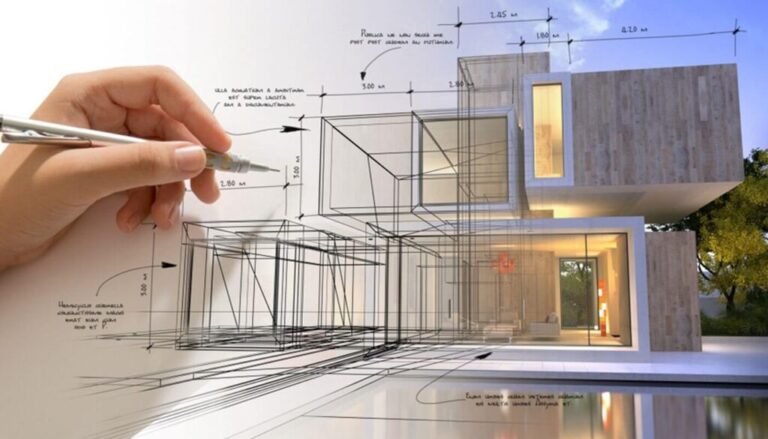Architecture & Interior Design: A Complete Guide
1. Introduction
Architecture and interior design are essential aspects of creating functional, aesthetic, and sustainable spaces. While architecture focuses on the overall structure and layout of a building, interior design enhances the livability, comfort, and style of the space within.
2. Architectural Styles
A. Traditional Architecture
- Classical (Greek, Roman, Renaissance) – Symmetry, columns, and ornate details.
- Gothic – High ceilings, pointed arches, stained glass.
- Colonial – Simple, symmetrical designs, wooden frames.
B. Modern & Contemporary Architecture
- Modernism – Minimalist, open spaces, flat roofs.
- Brutalism – Raw concrete, geometric shapes.
- Postmodernism – Playful, experimental, mix of old & new.
- Sustainable/Green Architecture – Energy-efficient, eco-friendly materials.
C. Vernacular & Regional Styles
- Japanese Zen – Simplicity, harmony with nature.
- Mediterranean – Stucco walls, terracotta roofs.
- Scandinavian – Functional, minimal, bright interiors.
3. Interior Design Concepts
A. Elements of Interior Design
- Space – Optimizing the layout for flow and function.
- Light – Natural and artificial lighting techniques.
- Color – Psychology of colors in design.
- Texture & Materials – Wood, metal, glass, textiles, etc.
- Furniture & Accessories – Styles, placement, and ergonomics.
B. Interior Design Styles
- Minimalist – Simplicity, neutral colors, decluttered spaces.
- Industrial – Exposed brick, steel elements, raw aesthetics.
- Bohemian – Vibrant colors, eclectic decor, layered textiles.
- Rustic – Natural wood, cozy fabrics, earthy tones.
- Luxury & Modern – High-end materials, sleek furniture, smart tech integration.
4. Sustainable Design Trends
- Energy-efficient buildings (solar panels, insulation)
- Eco-friendly materials (bamboo, recycled wood, low-VOC paints)
- Smart home integration (automated lighting, climate control)
- Green walls & indoor gardens for better air quality
5. Architectural & Interior Design Software
- AutoCAD – Precise architectural drawings.
- SketchUp – 3D modeling and visualization.
- Revit – BIM (Building Information Modeling) for detailed designs.
- 3ds Max – High-quality interior renderings.
- Photoshop & Illustrator – For presentations and concept boards.
6. Career & Business in Architecture & Interior Design
- Becoming a licensed architect or interior designer.
- Specializations: Residential, Commercial, Hospitality, Retail, etc.
- Running a design firm – Branding, marketing, client management.
7. Conclusion
Architecture and interior design are evolving fields that blend creativity, functionality, and sustainability. Whether designing a home, office, or commercial space, balancing aesthetics with practicality is key to successful projects.


